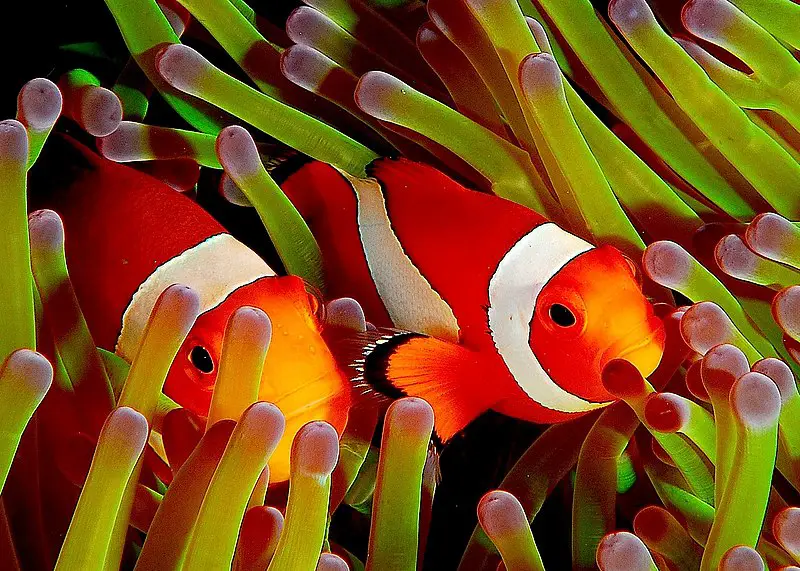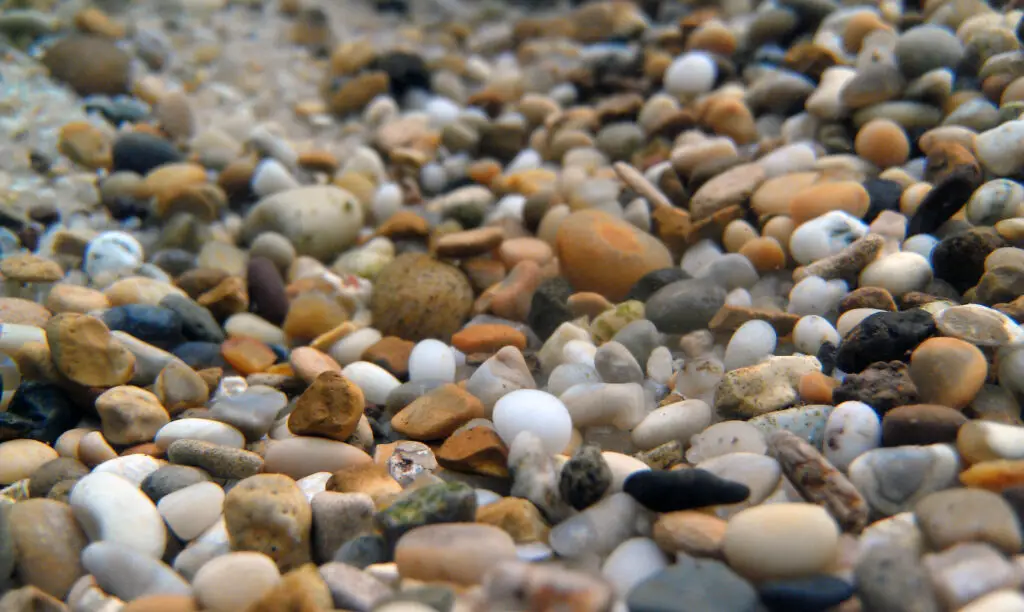Male and female clownfish will pair up and create a mating bond that lasts for the entire lifetime of the female. When clownfish are a compatible pair, there are certain behaviors they will exhibit to display their relationship to each other and any other clownfish within their group.
In this article, we will review how to determine if your clownfish are pairing as well as how long it takes for clownfish to pair up. Additionally, we will cover why your paired clownfish might be fighting and whether or not clownfish always find a mate with whom to pair.
How Do I Know If My Clownfish Are Pairing?
There are several signs to look for when trying to determine if your clownfish have paired with each other. Before pairing, they will act like separate, individual fish; however, once they have paired, they will do everything together.
During active hours, you will see them swimming side by side in unison. The female is the dominant of the two and will usually initiate some form of bodily communication such as a twitch to which the male will immediately respond. She may also nip at the male’s fins to assert her dominance until he submits and exposes his underbelly to her.
When it is time for your fish to rest, they will settle down in the same anemone. No longer do they occupy separate territory, once two clownfish have paired, they share everything. Once your clownfish have paired with each other, the female may reduce her aggressive behavior and they will begin to breed, with the female laying eggs near their shared anemone home.
How Long Does It Take for Clownfish to Pair?
It typically takes clownfish about one to three months to pair up if they are compatible with each other. Sometimes it can happen in less than a month and sometimes it never happens at all. To increase the chances of your clownfish pairing up, make sure you get a female that is clearly larger than the male.
Having the distinction in size between the two will help set up the necessary dominant/submissive relationship that allows the pairing of clownfish to be successful. If your clownfish do not pair up after about three months or definitely within the first year of introduction, you should remove one of them from the tank and try a different one.
Male and female clownfish that don’t pair up and live without the buffer of other clownfish in their group, may become aggressive toward each other. This could result in fighting that leads to one fish killing the other one.
If you want to encourage pairing, there are some techniques that you can try to help the fish become lifelong mates, but ultimately nature will take over and if they are meant to be, they will pair up. Just be patient and vigilant.
Why Are My Paired Clownfish Fighting?
The most common reason the paired clownfish fight is that the female is trying to assert her dominance over the male. In the dynamics of clownfish, the females are the larger and more aggressive of the two sexes. When clownfish are introduced in groups, the largest of them becomes the female, while the rest stay male.
Female clownfish demonstrate their dominance by nipping at and chasing around male clownfish, especially once they have paired up. The female needs the male to understand who is in charge even though she has chosen him for her life partner.
Both females and males can be aggressive during mating. What looks like fighting, is actually just courtship and most of the time, their actions are not intended to hurt one another. Once breeding has begun, females will stay aggressive in order to protect her brood of eggs.
Females can even show aggression toward her paired male if she believes he is endangering their eggs. Once the fry has hatched, the female’s aggression should drop back to normal levels and the pair will not fight unless the female feels the need to reassert her position, or they begin to breed again.
Will Clownfish Always Pair?
Clownfish do not always pair, and some can live alone without any problems. However, if you introduce two clownfish of the opposite sex in a tank with the expectation that they will pair, there are some techniques you can practice to help them pair up. If they don’t pair, it’s best to remove one and try a different partner.
One of the most common techniques to encourage pairing is to raise two juvenile clownfish together and let them naturally establish who will be the dominant female and who will be the submissive male. By being used to each other throughout their entire lives and especially when they reach sexual maturity, you are ensuring a more solid bond should the fish choose to pair.
Another factor to keep in mind when encouraging clownfish pairing is to choose two clownfish from the same species. Additionally, if you get two fish that are already sexually mature, make sure that the female is markedly bigger than the male so that there is less competition for dominance between the two.
Studies have shown that paired clownfish are overall healthier and more likely to thrive in their aquarium environment. Clownfish are social creatures and being able to interact with other clownfish is vital. Having the intimate bond of a mating pair is essential for breeding but can also help extend their lifespan and live an optimal life.
Conclusion
Clownfish are unique creatures in that they are one of the few species that mate for life. Females are the bigger and more dominant of the two sexes and she will assert her position when she finds a suitable male. A mated pair will do everything together from swimming around to the tank to sleeping in the same anemone at night.
While placing two clownfish in a tank together won’t guarantee that they will pair, there is a good chance that nature will take its course, and pretty soon you’ll have clownfish babies.



